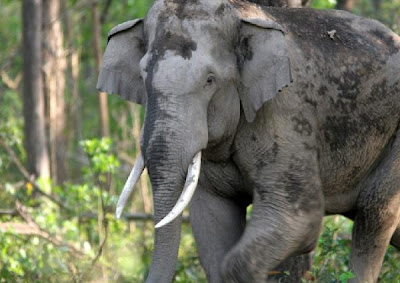India is a land blessed with astonishingly diverse terrain, creating perfect abode for thousands of species of flora and fauna. The country is brimming with above 500 wildlife sanctuaries and bird sanctuaries; out of these 28 Tiger Reserves are contributing intensely to increase and preserve the population of tigers these are governed by a government's initiative functional in the name of Project Tiger.
Such a plethora of wildlife sanctuaries attracts thousands of wildlife enthusiasts to the country making India wildlife tours one of the favourite travel theme amongst both native and foreign travellers. These wildlife reserves are spread throughout the country, each sanctuary with a different backdrop and different locale give options for enticing wildlife tour packages in India.
Such a plethora of wildlife sanctuaries attracts thousands of wildlife enthusiasts to the country making India wildlife tours one of the favourite travel theme amongst both native and foreign travellers. These wildlife reserves are spread throughout the country, each sanctuary with a different backdrop and different locale give options for enticing wildlife tour packages in India.
The remarkable story of Kaziranga has an inspiring quality; this gorgeous natural reserve has contributed tremendously in the preservation of One Horned Indian Rhinoceros and other rare species. A World Heritage Site, Kaziranga boasts of the highest density of tigers among the wildlife reserves in the world. It is a significant natural habitat preserving biodiversity of universal value making, Kaziranga an important breeding place for elephants, wild water buffalo and swamp deer.
A popular bird sanctuary situated in the desert state of Rajasthan, Bharatpur Bird Sanctuary is home to over 230 species of birds. The sanctuary also sees a great shift of bird populations from the west during winter seasons; these include numerous rare species such as Siberian Crane.
Announced a World Heritage Site the park houses various indigenous water birds, ducks, eagles, wagtails, flycatchers along with species of Sambar, Chital, Nilgai and Boar.
Announced a World Heritage Site the park houses various indigenous water birds, ducks, eagles, wagtails, flycatchers along with species of Sambar, Chital, Nilgai and Boar.
Jim Corbett National Park
The oldest national park in India, Jim Corbett National Park was the initiative of a hunter by the name, Jim Corbett. Situated in the northern state of India- Uttarakhand, the park has been applauded for its successful attempts at preserving the critically endangered species of Bengal Tiger.
Situated in the sub- Himalayan belt the park is a heaven of a place with scintillating 488 species of flora and wildlife that includes tigers, leopard, jungle cat, reptiles, elephants and more. A ride on elephant back is considered ideal means of encompassing the beauteous environs of the park.
Situated in the sub- Himalayan belt the park is a heaven of a place with scintillating 488 species of flora and wildlife that includes tigers, leopard, jungle cat, reptiles, elephants and more. A ride on elephant back is considered ideal means of encompassing the beauteous environs of the park.
Kanha National Park
Situated in the Indian state of Madhya Pradesh, Kanha National Park is included in most of the India wildlife sanctuary tour packages. The park renowned for conservation of a significant population of Royal Bengal Tiger is also home to other furious predators such as sloth bear, Indian wild dog, leopards and Barasingha.
The verdant environs of the park studded with sal and bamboo forests became base for Rudyard Kipling's famous novel 'Jungle Book' and even now inspires thousands to go on India wildlife tours.
The verdant environs of the park studded with sal and bamboo forests became base for Rudyard Kipling's famous novel 'Jungle Book' and even now inspires thousands to go on India wildlife tours.
Gir National Park
Situated in the state of Gujarat in India, Gir Forest National Park is one of the most significant protected areas in Asia for it is the only home for the Asiatic Lions. Spread on 1412 sq km of landscape, the park is covered with deciduous forest, perennial ravines and grassy meadows thus creating apt ambience for growth in the population of birds, crocodiles and wild beasts. The only place to see Asiatic Lions in the wilds, Gir National Park should not be missed on India wildlife tours.











.jpg)
















